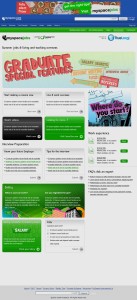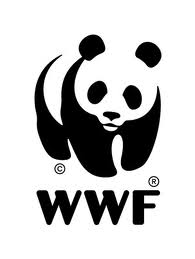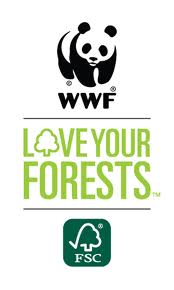Yes, you read right, I definitely make mistakes – in my professional and personal life. But this blog post is about my professional life and I’m still learning about social media, every day. I’m going to tell you about 3 examples of social media campaigns I have been involved in and give some examples about how they worked and how sometimes they didn’t work quite so well.
 I have been dabbling in social media since 2007 when I helped create the MySpace Jobs integration for CareerOne.com.au and MySpace in Australia. This was a much more technical exercise that put CareerOne job feeds into the MySpace environment in an effort to attract their large audience but also to entice recruiters and advertisers who had (perceived) cooler jobs to list them on CareerOne. The strategy was that in turn these new young users would convince advertisers to post their cool jobs with us and in turn drive increased job applications from the youth sector. In this case, MySpace was still the biggest social network in the world and the campaign strategy was a success and continued to be for about 2 years before MySpace’s cool factor started to decline with the rise of Facebook.
I have been dabbling in social media since 2007 when I helped create the MySpace Jobs integration for CareerOne.com.au and MySpace in Australia. This was a much more technical exercise that put CareerOne job feeds into the MySpace environment in an effort to attract their large audience but also to entice recruiters and advertisers who had (perceived) cooler jobs to list them on CareerOne. The strategy was that in turn these new young users would convince advertisers to post their cool jobs with us and in turn drive increased job applications from the youth sector. In this case, MySpace was still the biggest social network in the world and the campaign strategy was a success and continued to be for about 2 years before MySpace’s cool factor started to decline with the rise of Facebook.
Next I worked on WWF Australia’s social strategy, for its core brand as well as for Earth Hour and for a sub-brand Love Your Forests. This was a whole different strategy because you’re dealing with “supporters” who are already emotionally engaged in WWF’s missing and cause plus you’re working with an international brand that has one of the highest awareness rates (over 90% brand awareness) in the world, up there with Coca-Cola and McDonald’s. So getting new LIKES or FOLLOWERS (supporters) on board isn’t that tough but getting them talking/ commenting and sharing still requires a content strategy that flows well, with consistency in messaging. The hardest part in executing the WWF social media strategy was managing the supporters expectations of what the WWF brand represented and what WWF’s actual missions and goals were. Most people think WWF is about animal welfare and protection, when in fact they’re about biodiversity and habitat protection, which in turn helps the animals and plants but they don’t engage directly with the animals as much as people think.
 The other thing that was difficult about the WWF social media strategy is that a charity is usually very risk averse because they rely on individual and corporate donations to carry out there work. I was responsible for a posting a message on our Facebook profile about one of our corporate banking donors. This post had a link to the WWF website with information about this banking partner and WWF’s relationship, and the content on the website was out of date. Because of this, and a bad choice of words (one word used was “controversial”), one of the journalists picked it up and contacted the bank and as a result I caused a small whirlwind of concern and a flurry of anxious phone calls back and forth between the banking donor and WWF. The result was that they wanted 2 things. 1) Take the post down and 2) Update the website. The second request is completely fair as it was our responsibility to keep our website up to date, the 2nd request was a little trickier because social media is all about transparency and a two way conversation and censorship, in the form of taking down any post, does not fit within the etiquette of social media. In the end, money talks and the post came down but it forced us to consider our social media strategy more closely and actually create some guidelines.
The other thing that was difficult about the WWF social media strategy is that a charity is usually very risk averse because they rely on individual and corporate donations to carry out there work. I was responsible for a posting a message on our Facebook profile about one of our corporate banking donors. This post had a link to the WWF website with information about this banking partner and WWF’s relationship, and the content on the website was out of date. Because of this, and a bad choice of words (one word used was “controversial”), one of the journalists picked it up and contacted the bank and as a result I caused a small whirlwind of concern and a flurry of anxious phone calls back and forth between the banking donor and WWF. The result was that they wanted 2 things. 1) Take the post down and 2) Update the website. The second request is completely fair as it was our responsibility to keep our website up to date, the 2nd request was a little trickier because social media is all about transparency and a two way conversation and censorship, in the form of taking down any post, does not fit within the etiquette of social media. In the end, money talks and the post came down but it forced us to consider our social media strategy more closely and actually create some guidelines.
Earth Hour has been a resounding social success with high engagement in the months prior to earth hour and public voting for Earth Hour Awards in 2010 a great rejuvenator for the brand. But since we’re here to talk about social media mistakes, I’ll focus on the Love Your Forests campaign – this campaign is about promoting the purchase of sustainable timber and paper products in Australia. Because this was a new social media presence with corporate partners who were integral stakeholders (Bunnings and Kimberley-Clark) WWF wanted to have a detailed social media strategy with guidelines on what we could and couldn’t post and a response process in place in case we got any curly questions.
So all of this was fine, I drew up the social media guidelines and we created a response strategy in the case that consumers might question our partners or ourselves on the supply chain of wood and paper products. Then we started planning the social media content plan. I initially drew up a timeline and a group of topics with reference material for what type of information we would share and where that information would click through to. It was based on topics relating to the pulp & paper and timber industry as well as environmental facts to back up our cause. I planned using images and video for engagement and to educate people about the issues as well as information about our the Love Your Forests brand and its partners. As it was a new logo we needed to explain why the Love Your Forests logo, found on sustainable timber and paper products, can help consumers make better choices when shopping for things like groceries and furniture.
So this was agreed upon but both our partners and the WWF bosses wanted to see examples of actual posts. So we wrote a few example 140 character tweets and facebook posts to show how we would tackle each of the topics with a link to more information on the WWF website or the Love Your Forests website or perhaps our partners websites. This was agreed, but now they wanted to create and approve a full content plan with each tweet, post, image, video to be laid out, with a timeline and approved in advance of the facebook and twitter pages even launching. So I did it because I thought it would be a good exercise and it would save us time later in having to source the content every day. This was the mistake.
We had the plan approved by all parties and launched the facebook and twitter pages and started promoting them through the existing WWF and Earth Hour and Partner pages to get LIKES and FOLLOWERS. And we started diligently posting our pre-approved posts, taking our new supporters on a journey of the background to Love Your Forests, the forestry industry issues and how they affect the environment and why we needed an eco-label to help consumers make more sustainable choices at the checkout. And this worked fine for the first couple of days but then our supporters started to grow and suddenly our well thought out strategy wasn’t working so well because the new supporters who came on in week 4 didn’t have all the background information. So we would go back and start adding posts from our previous weeks to provide some of this information for them. And once we started jumping around our strategy, we lost the message thread and the dialogue and it resulted in internal confusion as well as inconsistent messaging for the community.
I also have many learnings and insights from my own digital marketing consulting social media presense and the challenges that I face in trying to get my followers to engage and comment and share but I’ll save that for another post as this blog has turned out much longer than I expected and there is much more we can discuss but from the 3 social media case studies that I have provided above, you can see that:
- Content Planning up front is important – know what you’re going to talk about
- Have social media guidelines for your business and have a crisis plan in place before you launch so you don’t need to censor your posts, you can respond to anything and have a conversation with your supporters/ customers
- You can’t over-plan social media. It is a free-flowing, organic medium and you gotta go with it
- It is much easier to grow a social media community when you have a brand or cause that connects with people emotionally
- Social media works best when you have a clear strategy of what you want from the social channel.
If you have any other social media mistakes that you want to share, please do so!


Trackbacks/Pingbacks